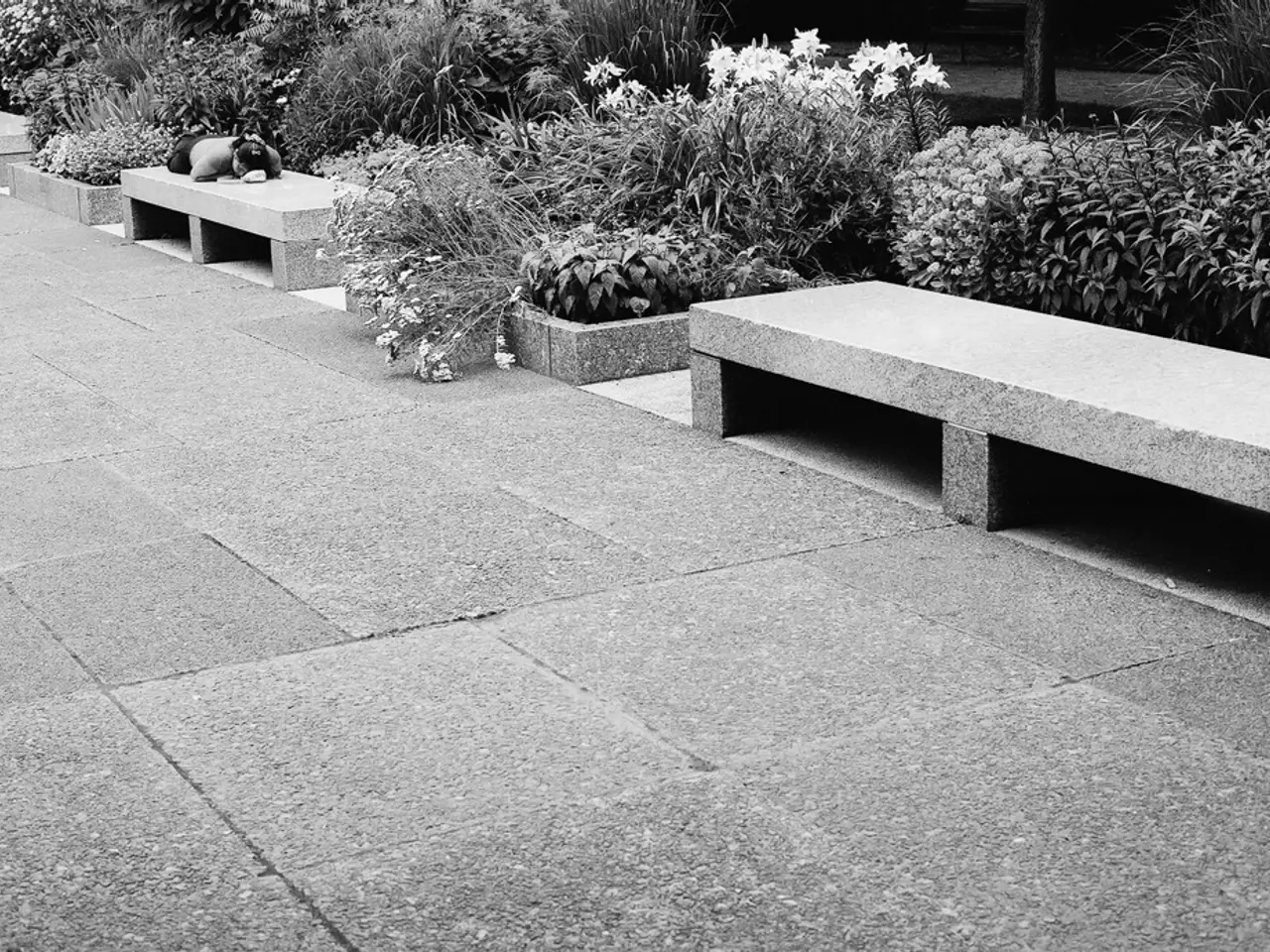Creating a visually pleasing and eco-friendly garden: Design ideas for chic eco-gardens
## The Role of Creative Materials in Sustainable Garden Design
Sustainable garden design is all about minimising environmental impact while fostering healthy, biodiverse ecosystems. Creative use of materials, whether natural, recycled, or repurposed, plays a significant role in achieving these goals.
## Stone, Concrete, and Wool: A Triad of Sustainable Materials
**Stone and concrete** are versatile materials that can be integrated into garden landscapes for both aesthetic and ecological benefits. Concrete patios and walkways, for instance, reduce the need for water-intensive lawns, while also offering durable, low-maintenance surfaces. Concrete planters and raised beds improve drainage, protect plants from pests, and can be designed to minimise runoff—key factors in water-wise gardening. When combined with stone, such as in hybrid pathways or steps, these materials create long-lasting structures that blend visual appeal with practical resilience.
**Wool pellets**, a byproduct of sheep farming, enrich soil by slowly releasing nutrients and improving water retention, thus fostering robust plant growth and reducing the need for synthetic fertilizers. Wool also supports beneficial soil microorganisms, which enhance nutrient cycling and improve soil structure for better plant health. As a renewable, biodegradable resource, wool pellets help close the agricultural loop and reduce environmental pollution.
## Repurposing and Upcycling: A Sustainable Approach
Creativity shines in the **repurposing of household materials**, such as bottles, cans, and tires, into garden planters and décor. This approach not only diverts waste from landfills but also gives gardens a unique, personalised look without additional resource consumption. Upcycling reduces the demand for new manufactured products, lowers the carbon footprint of garden projects, and demonstrates that sustainability can be both affordable and stylish.
## Supporting Ecosystems Through Design Choices
Sustainable garden design isn’t just about materials—it’s also about **plant selection** and **habitat creation**. Incorporating native plants reduces water use and maintenance while providing essential food and shelter for local wildlife. Designing gardens to mimic natural ecosystems (such as creating meadow-like spaces even in urban settings) supports pollinators and other beneficial species, enhancing biodiversity.
## A Symphony of Sustainable Materials
The use of creative materials in sustainable garden design is a symphony of sustainability, functionality, and beauty. From the repurposed concrete pavers that provide both structure and seating, to the wool pellets that enrich the soil, each material plays a unique role in creating a garden that is not only visually appealing but also contributes to ecological health.
## References
1. [Garden Design](http://www.gardendesign.com/garden-design/sustainable-garden-design-materials.html) 2. [The Spruce](https://www.thespruce.com/wool-pellets-for-gardening-1808004) 3. [Garden Myths](https://www.gardenmyths.com/recycling-and-upcycling-in-the-garden/) 4. [RHS](https://www.rhs.org.uk/advice/profile?PID=410)
- In sustainable garden design, creative use of materials such as stone, concrete, and wool are employed for both aesthetic and ecological benefits, offering a combination of visual appeal and practical resilience.
- Stone and concrete, integrated into garden landscapes, provide durable, low-maintenance surfaces that lessen the need for water-intensive lawns and improve drainage.
- Wool pellets, derived from sheep farming, serve to enrich soil by slowly releasing nutrients and aiding water retention, fostering robust plant growth and reducing dependence on synthetic fertilizers.
- Repurposing and upcycling household materials into garden planters and décor maintains a unique, personalized look while also reducing waste and lowering the carbon footprint of garden projects.
- Sustainable garden design values plant selection and habitat creation, incorporating native plants to reduce water usage, provide essential food and shelter for local wildlife, and support natural ecosystems.





